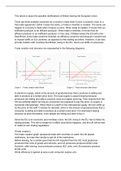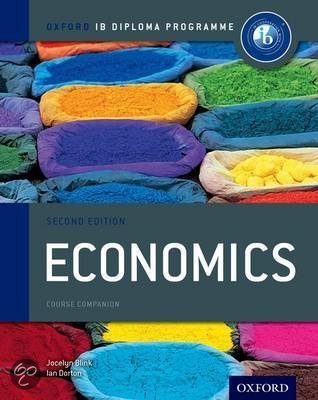This article is about the possible ramifications of Britain leaving the European Union.
There are three possible scenarios for a country’s trade when it joins a customs union or a
free trade agreement. Either it stays the same, or trade is diverted or created. The same can
happen to a country’s trade when it leaves a union. When trade is created, it moves from an
inefficient producer to an efficient producer. When trade is diverted, it moves from an
efficient producer to an inefficient producer. In this case, if Britain leaves the EU with a No-
Deal Brexit, some trade would be diverted, as efficiency would be lost because it would have
to impose tariffs on EU countries, as opposed to free trading as before. However, it can also
provide creation with countries that Britain, being in the EU, had to put tariffs on previously.
Trade creation and diversion are represented in the following diagrams:
Graph 1 - Trade creation after Brexit Graph 2 - Trade diversion after Brexit
S stands for supply, which is the amount of goods/services that a producer is willing and
able to produce at a certain price level. The local supply is upward sloping because
producers are willing and able to produce more at a higher price tag. Their imports from the
US are perfectly elastic as long as consumers are prepared to pay the price, so supply is
horizontal internationally. When there is a tariff on the international supply, the line shifts up
by the price of the tariff. D stands for demand, which is the amount of goods/services that a
consumer is willing and able to produce at a certain price level. It is downward sloping
because as price decreases, more people are willing and able to buy it.
Since the EU is an economic and monetary union, the UK, being in the EU, has to follow its
trading policies. This will no longer be in effect once Brexit happens, and the UK will be free
to make its own trading regulations.
(Trade creation)
The trade creation graph represents trade with countries on which the UK placed
restrictions, but may then decide to get rid of the restrictions.
Before leaving, for a certain good that the UK imported from the US, local producers
produced 0Q2 units of goods and services, and US producers produced Q2Q3 units.
However, after leaving, local producers produce 0Q1 units, and US producers produce
Q1Q4 units.
World efficiency is gained at area a and consumer surplus at b.





